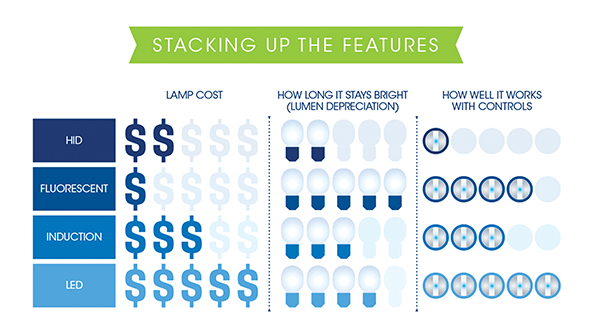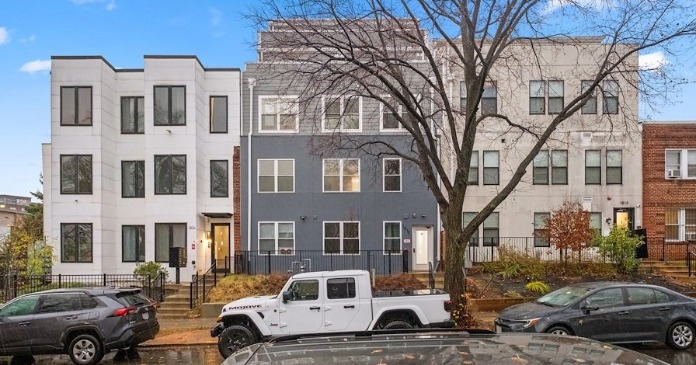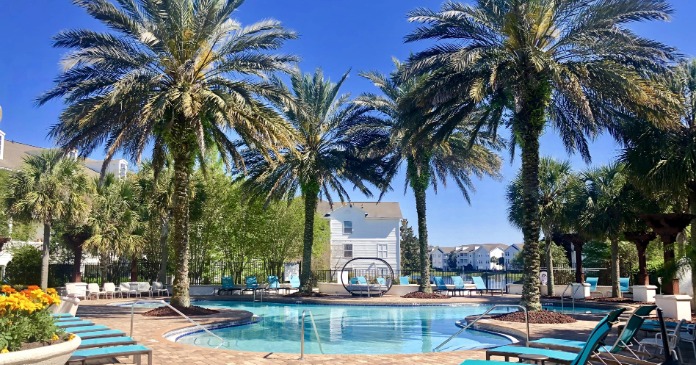Consider what ROI you need to initiate retrofits. With banks paying 1 to 3 percent, and stocks showing 8 percent to 10 percent, what ROIs can you anticipate with water and energy retrofits? During 12 years of installation experience, we have provided ROIs that range from 20 to over 100 percent. Existing rebates can reduce your investment and we have delivered 100 percent funding through utility company-direct installation programs.
Domestic water
Several reports on domestic water usage indicate that the average resident uses 65 gallons-per-day. Let’s assume a 100-unit apartment community with 80 1-bedroom/1-bath and 20 two-bedroom/two-bath with an average of 2.2 residents-per-apartment and a 95 percent occupancy rate.
The annual domestic water usage would be almost 5,000,000 gallons-per-year. This does not include water for laundry or irrigation. This translates to 6,600 annual water units where 1 water unit equals one hundred cubic feet (CCF) of water or 748 gallons.
The big question is what are you paying for one water unit? Throughout Orange County, California, the water rate varies between $2 to $3 per CCF. However, tiered water rates are getting more prevalent. Your water company sets a water “conservation” usage base-rate as the lowest tier. Exceeding this base usage will cause your tier rates to go up considerably.
Another factor is sewer costs. Generally, the sewer costs are consumption-based tied to the actual water consumed. In Orange County most of the water districts charge sewer on a flat rate per apartment. This cost can show up on your water bill or on a real estate tax bill. This flat rate, effectively, does not allow for sewer usage efficiency.
Let’s assume that with tiered rates your average water cost is $2.50 per CCF. The anticipated annual water cost of our sample site would be $16,500. A comprehensive retrofit program to change-out existing 3.5 gallon to 1.28 gallons-per-flush toilets, showerheads from 2.5 to 1.5 gallons-per-minute and aerators from 2.2 to 1.5 gallons-per-minute would reduce water usage by 45 percent for an annual savings of $7,425.
After applying the Orange County rebate of $50 per toilet, the retrofit would cost $22,320, providing an ROI of 33 percent. If we assume that the capitalization rate for apartment valuation is 6 percent, you have added $123,750 value to your asset.
There is more to consider: reduced water usage from showerheads and aerators will save gas therms to heat water. If you are providing hot water through a central heating system, you will also save considerable gas costs.
Irrigation
Irrigation water conservation has become a statewide hot button. Water reports estimate that approximately 50 percent of the water used on multifamily properties is for irrigation. Your current irrigation controller is a dumb clock. It does what you tell it to do and makes no adjustment for weather, seasons, etc.
The “smart” controller knows what your plants need to keep roots healthy, it knows if your plantings are in the shade or not or if you are watering on a slope. It also down loads, via the Internet, local weather conditions to properly adjust watering needs. The overall savings is 20 percent to 25 percent providing a 30 percent to 40 percent ROI after rebates.
Recently, we have begun offering the next generation, a “smarter” controller. New software and hardware provides 2-way, 24/7 monitoring, real time notification of any leaks and feet-on-the-ground for quick repairs. These advantages, and more, can provide 40 to 50 percent water savings after rebates. There are also rebates for removing turf and replacing with drought tolerant plants and/or artificial turf.
It’s great that we can take advantage of water conservation measures to provide a stronger bottom line and build asset value. Just as importantly, we are saving a precious California natural resource. A true win-win situation.
Energy ruling and its effect on the apartment industry
As part of its ongoing quest to improve energy efficiency in the United States, the Department of Energy’s rule-making of 2009 eliminated the commonly used types of T12 linear fluorescent lamps by July 2012. The reason is the lamps’ relative inefficiency compared to the more efficient T8s. The magnetic ballasts that are required to operate those T12 lamps were phased out in October 2010. This major change will directly affect multifamily owners as many apartments have T12s, and magnetic ballast systems in the kitchens and throughout the common areas, particularly in carports.
To put this in perspective, understand that over a period of more than 20 years, legislation has become law that has continued to phase out the availability of the most inefficient lighting-system components (lamps and ballasts).
While there are numerous examples of the impact of these regulations, one example that ordinary consumers might not be aware of was the elimination of the familiar 100-watt incandescent lamp in January 2012. This will be followed by the phase-out of the 75-watt incandescent lamp in January 2013, and the 60-watt and the 40-watt lamps in January 2014.
There are several alternatives to address the issue of the pending unavailability of T12 fluorescent lamps. In the short term, having an adequate supply of spare T12 lamps and magnetic ballasts on hand provides you with the ability to “keep the lights on” until a longer term approach is selected. However, this is, at best, only a temporary measure since when the T12 lamps expire and existing stock is depleted, it is essentially “game over.”
Retrofitting typical 2 to 4′ T12 lamps and magnetic ballast to 2 to 4′ T8 lamps with electronic ballast, through a licensed contractor, should cost you $35-$40.
The good news is that there is a positive “green” outcome: you will reduce your energy operating expenses by 25 percent to 40 percent per fluorescent lighting fixture and enhance the appearance of your apartments and common area.
Since 2009 the various California utility companies, in conjunction with the California Public Utility Commission (CPUC), have provided a rebate program that covers the entire cost of replacing the T12s and magnetic ballasts to T8s with electronic ballasts. However, effective the earlier of December 2012 or upon the depletion of available rebate funding, this program will cease.
In summary, based on DOE’s 2009 energy rule-making, you will soon be in a position to change out your T12s to T8s. The opportunity to take advantage of available rebates will end shortly. The upside is that you will improve your bottom line and assist in creating a cleaner environment.
Why are most T12 fluorescent
Systems being phased out? The Energy Policy Act (EPACT) of 2005 and the Energy Independence and Security Act (EISA) of 2007 were enacted Federal legislation to establish energy reduction targets for the United States.
Effective in 2010, T12 magnetic ballasts could no longer be manufactured or imported for sale. In addition, effective July 14, 2012, all linear fluorescent lamps manufactured or imported for sale in the U.S. must meet more stringent efficacy (lumens per watt) standards.
These acts have had significant impact on lighting technology, and have encouraged the use of T8 and T5 fluorescent lamp and electronic ballasts.
The effective lamp and ballast wattage for two 4′ T12 lamps and magnetic ballast is 88 watts. The new T8 lamps with electronic ballasts use approximately 56 watts. Effectively, a 40 percent decrease in energy usage. In addition, newer T8 and T5 technologies create a better light quality, give off less heat and have a 24,000 hour rated life lasting up to 3 times as long as T12 lamps, reducing maintenance costs associated with lamp change outs.
For the past several years, the IOUs (investor-owned utilities ie: SCE) have been providing incentives to replace T12 lamps and magnetic ballasts with T8 lamps and electronic ballasts. These current incentive programs will, essentially, be phased out by the end of 2012 as standard T8 lamps have become the industry standard and no longer require monetary incentives for installation.
Your best course of action: change out T12 systems throughout your common areas for maximum savings, whether there are rebates or not, and develop a retrofit program, perhaps on turnover, for all of your interior apartments that are still T12s.
More lighting efficiency
You should consider changing out existing T8 32W lamps to T8 28W lamps and delamping existing fixtures. Although the 32 watt T8 to 28 watt T8 change out is only a 4 watt savings, it does represent a 12 percent energy reduction. The option to delamp involves removing 1 lamp from a 2, 3 or 4 lamp fixture at time of conversion. This conversion should include new reflective troffers that will space the new lamp configuration correctly. You can anticipate a reduction of 60 percent electrical use by delamping a 3 lamp T12 system to a 2 lamp T8 system. Since the majority of apartment owner’s common area electric meters are on commercial rate structure rebates are available through SCE’s commercial programs.
Not only are there partial rebates for 32 watt T8 to 28 watt T8 replacements and delamping, there are also incentives available for changing out 65 watt and 75 watt floods lamps to 15 watt and 23 watt CFLs and exterior 75 watt floods lamps to a 23 watt CFL. In addition, all of your high wattage high-intensity discharge (HID) lamps that include metal halide, high and low pressure sodium and mercury vapor fixtures can be changed out to T8 and T5 systems, CFLs, pulse start metal halide, LED or induction.
LED and induction require a larger investment, but provide 50 percent to 80 percent more wattage savings. Also, LEDs have a 50,000 hour rated life and induction is rated at 100,000. A simple example: if you have an 24/7 elevator with either T12 lamp(s) or 50 watt halogen(s) the conversion to T8 or 7 watt LEDs should provide over a 100 percent ROI. Also, your ongoing labor and material change-out costs will be dramatically reduced as the T8s will last up to 3-times longer and the LED up to 25-times longer. There are also incentives for lighting controls that may be useful in areas where lights are on, but the area is vacant most operating hours. This could include stairways, offices etc.
Think of all the opportunities you may have at your apartment community to reduce your electric usage: leasing centers, amenity facilities, common hallways, carports, interior garage, wall packs, walkway lights and parking lot pole lamps.
The initial cost may be high, but when you consider the energy savings, avoidance costs, utility company incentives, that may include financing, the ROI may meet your investment criteria. Keep in mind that by increasing your net operating income you are effectively increasing your assets capitalization value.
Author: Steven Dorman, veteran multifamily energy consultant and implementer















